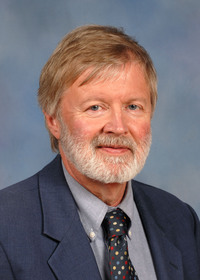Community Economic Development: Key Concepts
Community economic development (CED) is a crucial process for any community, regardless of size or location. With globalization continuing to impact communities and the digital age in full swing, understanding what affects CED is critical. Community economic development, when implemented correctly, has the potential to help communities not only remain competitive but, more importantly, adapt to a very complex and dynamic situation.
This publication, the first in a community economic development series, provides key concepts and definitions related to the CED process. These describe what this process includes, what affects it, and how it can be unleashed in communities. In practice, community and economic development go hand-in-hand and distinguishing them is somewhat difficult; in theory, however, it is easier and appropriate to do so.
Key Concepts & Definitions
The concepts covered here are not intended to be comprehensive, but they should provide a broad understanding of the CED process. Before we discuss these concepts, it is important to understand a key difference between growth and development. Many people equate these two terms, which can have negative consequences for the CED process. Growth is a quantitative increase, while development is a change aimed at a particular goal (Robinson & Green, 2010). In other words, growth is more about quantity, while development is more about quality. As a community leader, do you want your community to grow or do you want it to develop? Answering this question is critical before attempting to implement a CED process in your community.
Let’s begin with a basic question: What is a community? The definition of community is usually taken for granted but not truly understood. As an example, ask several of your colleagues how they would define community, and you will see that their definitions vary widely. So what is a community? A community is a geographically defined place where people interact (Robinson & Green, 2010). But a community is not only the physical space where people interact; it also provides important activities and functions that serve its residents. These community functions range from economic (provides goods and services) to socialization (the process through which the community transmits its knowledge, values, and behavior patterns to its residents) to social control (the process through which a group influences the behavior of its members to conform to its norms) to social participation (provides a venue through which residents can participate in their communities) to mutual support (provides help and support in times of need) (Warren, 1987).
These functions are not carried out in a vacuum; they rely on institutions—defined as rules, including informal norms, and organizations that coordinate human behavior (Anglin, 2011). Institutions in a community vary and include family, economic, education, political/government, faith-based/religious, and associations. For example, some communities may have stronger political institutions and weaker education-related institutions. This institutional diversity affects horizontal and vertical linkages in the community. Horizontal links refer to connections between local institutions (such as a local nonprofit with the local school), while vertical links refer to connections between local institutions and external (state, regional, or federal) resources (such as the local economic development organization with a statewide or regional economic development agency). The catch here is that focusing only on vertical links can compromise community autonomy—relying almost solely on external organizations to move the community forward. A more balanced approach uses horizontal links to identify community priorities and issues and then vertical links to secure external resources and expertise.
In summary, linkages are the capacity of communities to carry out functions that depend on the nature and strength of institutions (Robinson & Green, 2010). The question now becomes: What is community development? Though multiple definitions exist, this is a good community development definition:
a group of people in a locality initiating a social action process—i.e., planned intervention—to change their economic, social, cultural, and/or environmental situation (Christenson & Robinson, 1989)
If you have a hard time remembering such a long definition, remember these key words: people, locality, planned, change, and situation. Community development is all about people planning to change a specific situation in their communities.
To effectively identify solutions and deploy resources and programs, multiple players, including but not limited to local residents, private foundations, government officials, and community development corporations, need to be involved in the process.
Community Development versus Economic Development
Now that we have discussed key concepts and defined community development, we need to understand what economic development is. This is a good definition of economic development:
a process that influences growth and restructuring of an economy to enhance the economic well-being of a community (International Economic Development Council)
Regardless of the definition used, economic development is often associated with two objectives: (1) creation of jobs and wealth and (2) improvement of quality of life (International Economic Development Council). The first objective typically leads to the second, but, generally, the focus is on the business aspects of communities. So the difference between community and economic development boils down to one approach (community development) focusing on broader community issues including but broader than jobs and businesses, while the other approach (economic development) focuses mostly on jobs and businesses. Both are processes taking place in a community or region. These concepts are summarized in Table 1.
|
Key concept |
Definition |
|---|---|
|
Growth |
Quantitative increase in size |
|
Development |
Quality change aimed at a particular goal |
|
Community |
Geographically defined place where people interact |
|
Functions |
Responsibilities and activities inherent in a community |
|
Institutions |
Rules, including informal norms, and organizations that coordinate human behavior |
|
Linkages |
Capacity of communities to carry out functions depending on strength of institutions; these can be vertical and horizontal |
|
Community development |
People in a defined location planning to change a situation |
|
Economic development |
Process that influences growth to enhance well-being |
|
Community economic development (CED) |
Process that allows residents to mobilize and build assets to improve their quality of life in a sustainable way |
CED and Sustainability
Make no mistake: community and economic development are intertwined. It is important to distinguish them theoretically, but, in reality, they depend on one another to make a community sustainable. In other words, CED allows residents to mobilize and build assets to improve their quality of life in a sustainable way. If too much effort is placed on either at the expense of the other, the community will struggle and will not be sustainable. In this particular context, sustainability refers to engaging in practices that result in availability of resources, services, and quality of life for future generations.
CED is a complex process. Multiple moving parts and players are involved, and it may take years to bear fruit. However, with committed leaders and a clear vision of where the community wants and needs to be, CED can move communities forward in a comprehensive way. Community challenges and opportunities emerge together; it is up to the community to decide if it will focus on the challenges or on the opportunities. CED is a process that allows a community to focus on both but, more importantly, to adapt to challenges and opportunities.
The next community economic development publication will talk about general community development approaches.
References
Anglin, R. V. (2011). Promoting Sustainable Local and Community Economic Development. CRC Press.
Christenson, J. A., & Robinson, J. W. (1989). Community Development in Perspective. Ames: Iowa State University Press.
International Economic Development Council. (n.d.). Economic Development Reference Guide. International Economic Development Council. Retrieved from http://www.iedconline.org/clientuploads/Downloads/IEDC_ED_Reference_Guide.pdf
Robinson, J. W., & Green, G. P. (2010). Introduction to Community Development: Theory, Practice, and Service-Learning. SAGE Publications.
Warren, R. (1987). The Community in America (3rd ed.). UPA.
Publication 2901 (POD-01-23)
Reviewed by Rachael Carter, PhD, Extension Specialist, Extension Center for Government and Community Development. Written by Roberto Gallardo, PhD, former Associate Extension Professor, Extension Center for Technology Outreach.
The Mississippi State University Extension Service is working to ensure all web content is accessible to all users. If you need assistance accessing any of our content, please email the webteam or call 662-325-2262.






